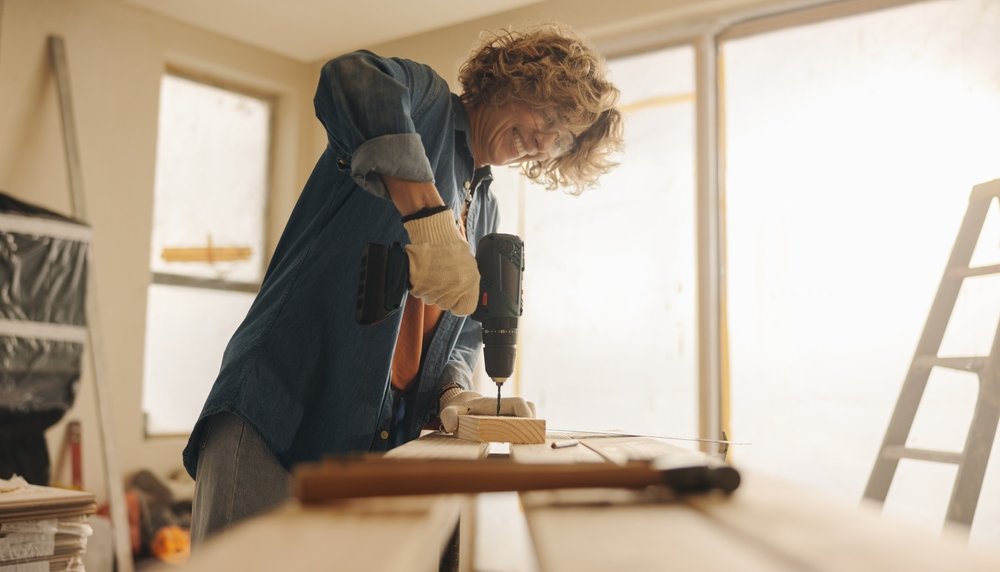When it comes to home renovation projects, there are many challenges you can face to transform it into the dream haven that you love. Renovating your home is a chance to put your personality into it and create character, while achieving the right atmosphere that works for you. However, with lots of tasks to do to complete the renovation and many obstacles arising, such as work that needs to be done that was hidden or various materials to mold and change, it can feel difficult to get the perfect end result that you desire. But, with determination and the right tools, you can transform your property into the perfect dream home that works for you and your family.
To get there, you need to understand different materials and how you can work with them, because this is a huge factor in home renovation. Your home is built up of many layers of materials, so it’s easy to come across something tough to work with. Use these professional tips for tackling tough surfaces in home renovation and get to grips with various materials to make the renovation work much easier.
Understanding the Challenge of Tough Surfaces
To be able to work with tough surfaces, you need to understand why they are so challenging and how you can best manipulate them to create the end result you want. You can quickly face tough materials, such as brick, concrete, stone, and reinforced materials, which can be a challenge to work with and can even completely stall your project, especially if you don’t know how to deal with these materials or have the right tools for them. These materials are made to last and have exceptional durability, which makes them difficult to cut, drill, or alter. Whether you are creating a new doorway, installing a window, or adding utilities such as plumbing and electrics, knowing how to approach these materials is essential for achieving professional results. Without the right techniques, working with these surfaces can lead to unnecessary damage, wasted time, and added costs.
Preparation is Key
Before you start to work with any dense surface, whether that’s drilling or breaking it down, it is essential to prepare for these surfaces, making planning the first priority. You need to assess the type of material you are working with to help you know exactly how to handle it. If you’re unsure, research that material and see how best to manipulate it. Finding out what tools you need and the best method to work with the material will help make the renovation work so much easier. Research is needed, even if you have some knowledge on the material, because materials all have different properties and they need their own specific approach.
When you plan ahead, you help to reduce mistakes that can compromise the structural integrity of a wall or floor. If you mark out measurements carefully and double-check alignments, you ensure everything is accurate before any work begins. Skipping this stage often leads to uneven finishes and additional repair work.
Safety is another part of preparation that should not be underestimated. Dust, debris, and vibrations can create risks when working with heavy-duty materials. Wearing protective equipment such as goggles, gloves, and dust masks is vital. For larger projects, it is also worth considering dust extraction systems or wet cutting methods to minimize health hazards during the job.
Using the Right Tools
The tools you use have a significant impact on tackling tough surfaces and can be the difference between a smooth, efficient process and a frustrating experience. While it might be tempting to use the same drill or a saw that works on lighter materials, heavy-duty projects demand equipment designed for strength and precision. Professional tradespeople understand that forcing unsuitable tools can not only ruin the finish but also damage the tools themselves.
When it comes to creating clean, precise openings in masonry or concrete, specialized solutions are available that help you create stunning finishes for the best outcome. For example, diamond core drill bits are commonly used because of their durability and ability to cut through dense surfaces with minimal effort. Having access to such tools can save considerable time and produce results that match professional standards.
Controlling Dust and Debris
Working with hard surfaces produces a significant amount of dust and debris, which can quickly spread beyond the work area and cause issues. If you’re constantly in a dusty environment that has leaked past where the work is being done, you can face serious health concerns. Dust can trigger allergies and cause issues with breathing, as well as other health problems that can quickly deteriorate your overall health. As well as this, dust scattering across your home can create more mess that needs to be cleaned up and, if the dust settles there for a while, it can cause issues in other parts of the property. Many professionals often manage this issue by isolating the space with protective sheeting and using dust extraction where possible. Wet cutting techniques are another option, as they help suppress dust and extend the life of certain tools. Taking time to control debris during the job ultimately leads to a safer environment and a more efficient renovation process.
Knowing When to Call in Experts
While many home renovators are comfortable tackling smaller tasks themselves, there are moments when calling in a professional is the most sensible option. Cutting through reinforced concrete or altering load-bearing walls requires expertise to ensure safety and compliance with building regulations. Attempting such projects without the right knowledge can cause structural problems that are costly to fix. You need to be able to recognise the limit of DIY, even if you are an expert with a wide array of DIY projects, because you can put your safety, and the safety of your family, at risk when attempting things that are beyond your knowledge. It doesn’t hurt to get professional support when you need it to protect the property and the people within it!
Working with tough surfaces is one of the most challenging aspects of home renovation, but with the right preparation, tools, and techniques, it can be managed effectively. By approaching these tasks carefully, renovators can achieve results that not only look impressive but also stand the test of time.








